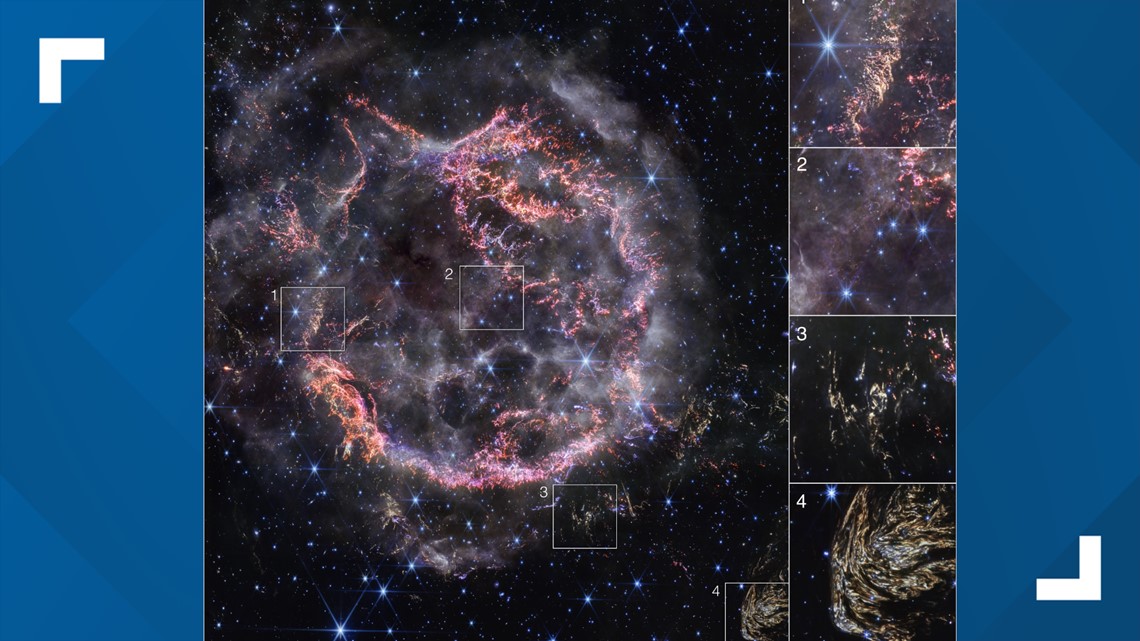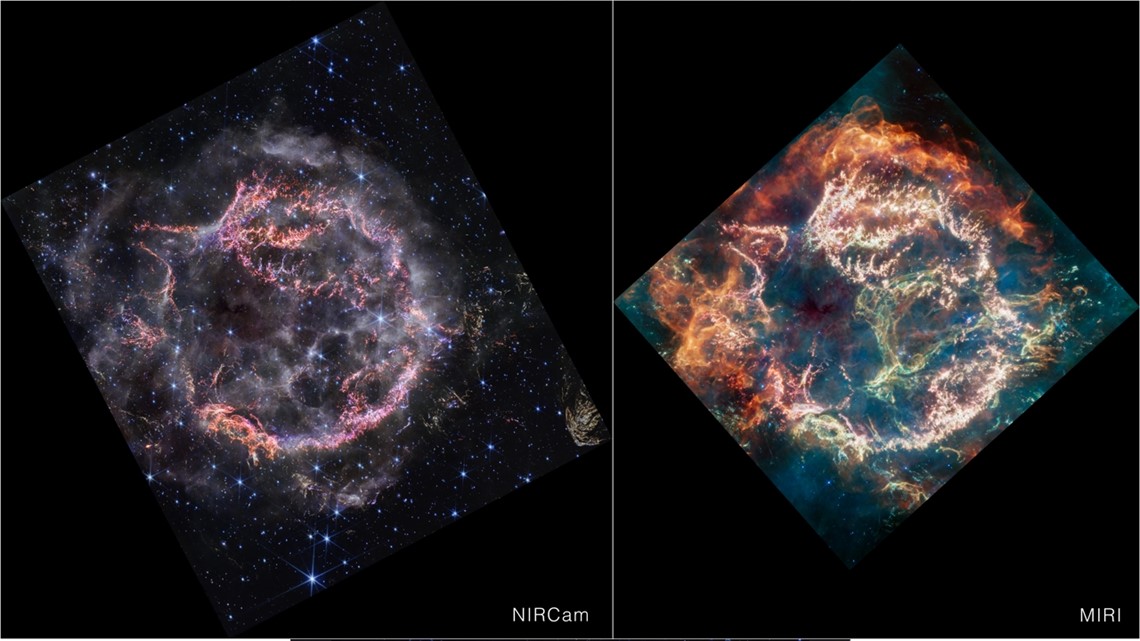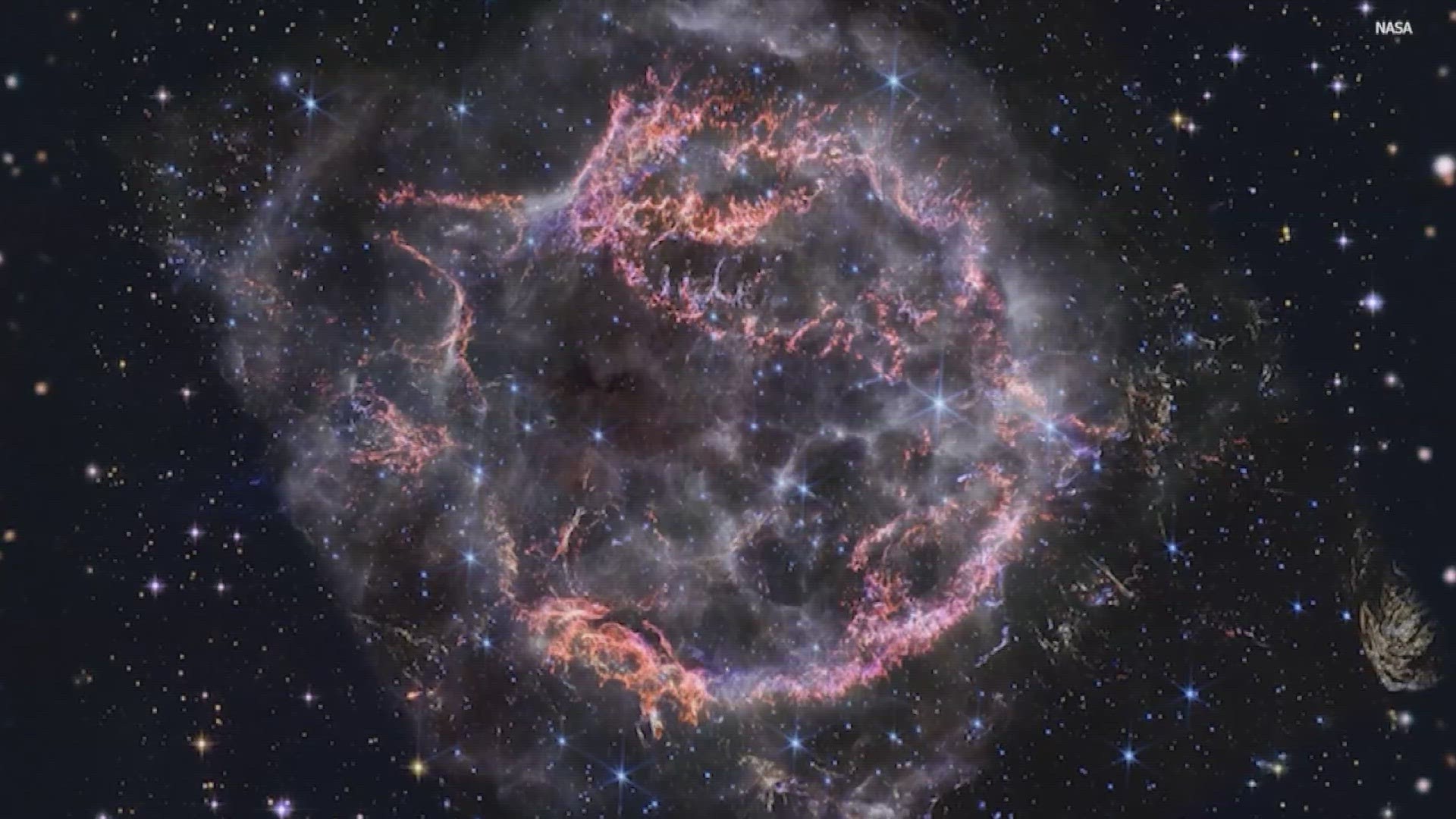WEST LAFAYETTE, Ind. — New images from the James Webb Space Telescope that show intricate details of a supernova remnant called Cassiopeia A, a shimmering interstellar structure already under analysis by Purdue University scientists, are now being honored by the White House for sparking some holiday cheer.
Images of Cassiopeia A were debuted this week as part of the 2023 Holidays at the White House. Though some of us may indeed look at the high-res images of Cassiopeia A and see a perfect ornament, the team of Purdue scientists who watched as the Webb telescope first rocketed off the coast of French Guiana in 2021 look at it and see the basic materials that make up our universe.
“I hope that when anybody looks at this image, you can just marvel that the universe can be so creative and create such a thing,” said Purdue professor Danny Milisavljevic, who leads the research into Cassiopeia A.
Merry and bright though the image of Cassiopeia A may be, it actually shows the corpse of what was once a star.
Cassiopeia A is about 11,000 light years from Earth, and is a supernova remnant likely created from the collapse of a red supergiant that lost its hydrogen core when it exploded 340 years ago, from Earth’s point of view.
That explosion sent swaths of cosmic stardust out into the silent night of space — dust that eventually comes to form future stars and planetary systems. Even the iron in your blood can be traced back to interstellar starstuff from a supernova.
“A supernova explosion is one of the primary drivers that helps a galaxy evolve and grow,” Milisavljevic said. "A lot of the science is understanding how those dust grains form, and how they can be destroyed as they take this very violent trip into interstellar space."
Images from Webb give researchers a view way into the past for a closer look at the process, one that begins as a tiny fuzz of dust in the universe and expands.
"It's a complicated process. And the more clear data we have about how the gas is distributed and where specific elements of gas end up after the explosion — because they're not all organized together, they get mixed up considerably," Milisavljevic said.
The image highlights several interesting features of Cassiopeia A through Webb’s Near-Infrared Camera, or NIRCam, with the high-quality resolution tracking tiny knots of gas, comprised of sulfur, oxygen, argon and neon from the star itself.


The images are not the first ones of Cass A captured by Webb. In April 2023, the Webb's Mid-Infrared Instrument captured images of Cass A.
This time, the telescope’s NIRCam shows a resolution at previously unreachable wavelengths in the new images, according to NASA. The high-resolution images show the intricate detail of an expanding shell of material, slamming into the gas shell by the star prior to its explosion.
‘What's the characteristic age of those stars? And all that science into going from a fuzz ball to understanding the origins of the first stars and and galaxies, rely on the robust measurements we can make in our own local universe, and rely on understanding how supernova explosions spread material,” Milisavljevic said.
He remembered watching in fascination on Christmas Day in 2021 with colleagues from around the world as the $10 billion telescope designed to see further into the reaches of the cosmos with more clarity than any other telescope in the history of mankind launched into space. While the assistant professor of physics and astronomy knew his team would be stunned by whatever images Webb picked up of Cass A, what they eventually did see was even more mysterious.
"It's been all that I anticipated and more. We expected the unexpected, but you never know how that's gonna feel. Now, even when I look at it today, I'm still dumbfounded. And I'm still unpacking things that I hadn't seen before," Milisavljevic said.
Researchers were especially stunned by the appearance of what’s now being called Baby Cass A, a light echo spotted 170 light years behind Cass A. It's a phenomenon that happens when light from the star’s long-ago explosion has reached, and is warming, distant dust. The dust glows as it cools down., and it appeared as an offspring of sorts to Cass A.
"We never saw this before because we never had an instrument like Webb before. And all of a sudden, this questions our understanding of what the gas is like out in distant space," Milisavljevic said. "This is supposed to be an isolated cold space and and more puffy, but it has this incredible, intricate structure to it."


Studies into Cass A remain crucial, NASA and Milisavljevic reiterate, because it is the youngest known supernova remnant in our galaxy. Any new phenomena spotted there could give us a hint about how those systems work elsewhere in the vast reaches of space.
“It's going to take years, perhaps the rest of my career, to really understand everything that this data has. That can tell us about how the explosion proceeded, and its relevance for understanding how the first stars and and galaxies formed, and, you know, ultimately, our place in the universe," Milisavljevic said.
You can see more space images captured by the Webb telescope here.

